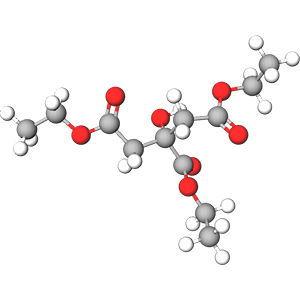

Triethyl Citrate is a naturally derived or synthetically created ester of citric acid, known for its use as a fragrance fixative and plasticizer in cosmetics. It helps to stabilize volatile compounds, prolonging the scent of perfumes on the skin. Due to its non-toxic and biodegradable nature, it is considered an eco-friendly choice for fragrance formulation. It also serves as a solvent and diluent, enhancing the overall texture and application of fragranced products without altering their scent.
Used in perfumery to extend the longevity of the fragrance on the skin, making scents last longer and preventing rapid evaporation. Its ability to act as a solvent helps to evenly distribute fragrance oils in the product.
IUPAC Name: triethyl 2-hydroxypropane-1,2,3-tricarboxylateCAS Number: 77-93-0
Molecular Formula: C12H20O7
Molecular Weight: 276.28 g/mol
Boiling Point: 294.0 °C (561.20 °F)
Melting Point: -55 °C
Class: Ester
Use/s: Fixative
Synonyms
1: TRIETHYL CITRATE 2: Ethyl citrate 3: Citroflex 2 4: Eudraflex 5: Hydragen CAT 6: Citric acid, triethyl ester 7: 1,2,3-Propanetricarboxylic acid, 2-hydroxy-, triethyl ester 8: triethyl 2-hydroxypropane-1,2,3-tricarboxylate 9: Triaethylcitrat
Chemist Says
Liquid
Scent profile
Scent profiles are inherently subjective and can significantly differ among individuals, and may also be influenced by the conditions at the time of evaluation. The information provided here is a synthesis of data from diverse sources, including books, cross-references, artificial intelligence analyses, and chemical research sites, aiming to present a comprehensive overview. We've distilled this information to highlight the most frequently observed scent profiles for each molecule or compound, offering a generalized perspective.
1: Fruity odor
 Irritant
Irritant